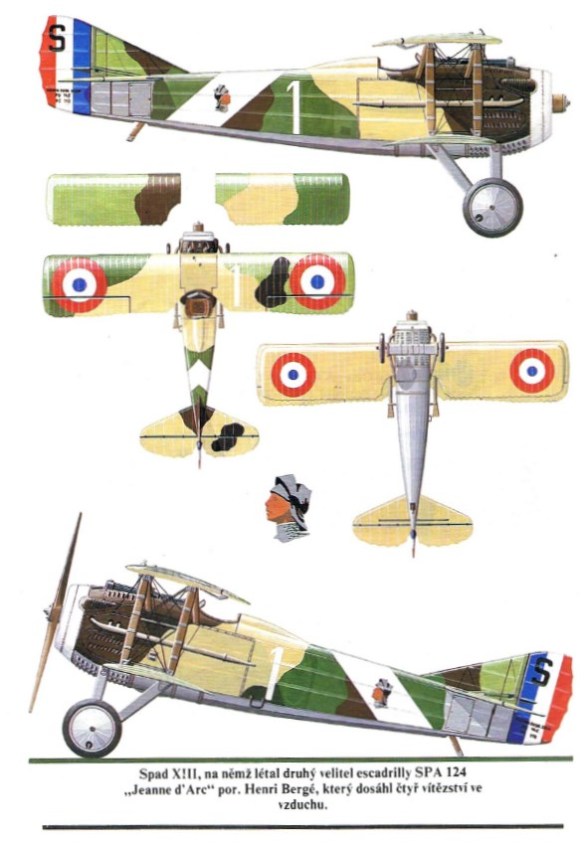The magnificent SPAD XIII was the best French fighter of World War I and a radical departure from earlier design philosophies. Although not as nimble as the lighter Nieuports, the sacrifice in maneuverability was offset by speed and ruggedness.
In 1916 the inability of the Societe Pour les Appareils Deperdussin (SPAD) to market the SPAD A 1 two-seat fighter induced designer Louis Bechereau to rethink his approach. In April 1916 his prototype SPAD VII emerged as a completely new aircraft sporting beautifully clean lines. It was a conventional biplane with unstaggered, four-bay wings and a round cross-section fuselage housing a 160-horsepower in-line V engine. Armament was restricted to one machine gun. Test flights proved the SPAD VII possessed great speed and strength, so the craft entered service within months. The new fighter was immediately successful, being faster than German fighters in both climb and level flight. Moreover, SPAD VIIs could absorb amazing amounts of damage and return safely. By 1917 more than 5,000 had been produced, and they equipped virtually every French fighter squadron, along with many in Italy, Belgium, and Russia. Reputedly, Italian ace Francesco Baracca grew so attached to his SPAD VII that he refused to trade it when later models became available.
In 1917 Bechereau capitalized on his success by developing the mighty SPAD XIII. This was a further refinement of his earlier masterpiece, with two machine guns, longer wings, and a stronger engine. In combat the SPAD XIII repeated the success of the earlier design, and it became the chosen mount of numerous French aces such as Rene Fonck, Georges Guynemer, and Charles Nungesser. By 1918 more than 8,472 had been constructed, equipping no less than 71 French squadrons. It also replaced rickety Nieuport 28s of the American Expeditionary Force and was flown with great success by Captain Eddie Rickenbacker. More than any other airplane, the SPAD XIII helped turn the air war’s tide in favor of the Allies. Afterward it was widely exported abroad and continued in frontline service for nearly a decade.
